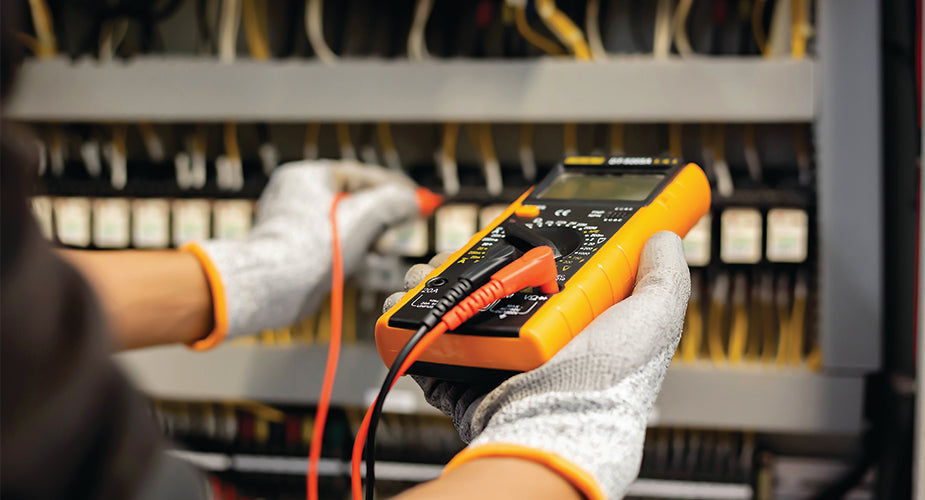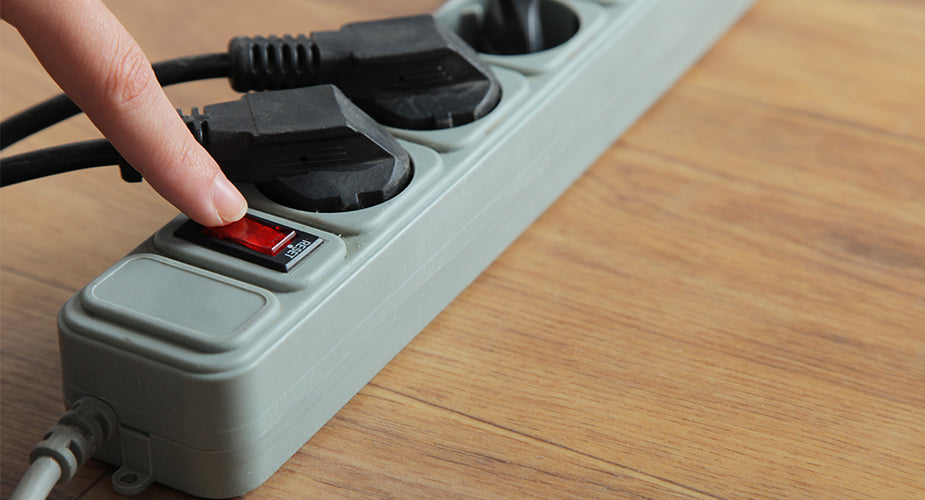As more and more homeowners increasingly turn to renewable sources like solar generators to power their homes, understanding electrical concepts is paramount. Among the crucial concepts you should know about is how to calculate amps from watts. Learning about electrical terms and what they mean helps you in optimizing energy usage and ensuring the safety and efficiency of your electrical systems at home.
If you’re looking to manage your home’s solar power system properly, understanding basic electrical terms such as amps, watts, and volts is advantageous, if not foundational. In this article, we’ll take a look at the definitions of these terms and how to convert watts to amps. We’ll also explore the difference between direct current (DC) and alternating current (AC), which are essential considerations in these conversions.

Defining Amps, Watts, and Volts
Before going into the calculations, let’s first define the fundamental units of electricity:
What are amps?
Amps, short for amperes, measure the rate of flow of electric charge in a circuit. They indicate how much current flows through a conductor at a given time. For example, if a light bulb requires 1 amp of electricity to shine, it means that 1 amp of electric current is flowing through the wires to power the bulb.
What are watts?
Watts measures power, which is the rate at which energy is consumed or produced. It represents the combined effect of voltage (volts) and current (amps) in a circuit.
To put it simply, watts measure how much work something can do or how bright a light bulb shines. For instance, a hairdryer that uses 1500 watts means it consumes 1500 watts of electricity to blow the hot air. Similarly, a 60-watt incandescent light bulb means it emits light with the power of 60 watts.
What are volts?
Volts, or voltage, is the force or pressure that pushes electricity through the wires. Think of it as the pressure in the water pipe that pushes the water (or, in this case, current) to flow.
For example, standard outlets in the US run at around 120 volts. This means that there’s a force of 120 volts pushing electricity though the wires to power your appliances.
To sum, amps measure how much electricity is flowing, watts measure how much power is being used, and volts measure the force pushing the electricity.

Understanding AC and DC Power
As mentioned earlier, it is vital to understand and consider AC and DC power when converting watts to amps. This is because the type of current affects the calculation method and components used in the electrical system.
What is Alternating Current (AC)?
From its name, the electric charge in an AC circuit alternates between flowing forwards and backwards in a regular, repeating pattern. AC is the standard form of electrical power that is delivered to homes and businesses through local utility power lines. Additionally, it is well-suited for powering various types of electrical devices, home appliances, as well as lights and electronics.
What is Direct Current (DC)?
Unlike AC power, which changes its flow, a direct current flows consistently in one direction. Although DC is less common in household applications, DC power is prevalent in battery-operated devices, solar panels, and certain electronic systems. Solar panels harvest and generate DC power, which is then converted to AC power by solar generators to be used in most household appliances.
Converting Watts to Amps
There are several instances where you may find yourself needing to calculate amps from watts. Some instances could be:
(1) load management and component sizing – by converting watts to amps, you can determine the amount of current flowing through the circuit, allowing you to select the correct sizes of wires, breakers and fuses;
(2) safety – overloading can be prevented by calculating amps from watts to ensure the safety of the electrical system and its components;
(3) energy-efficiency – by converting watts to amps, you can identify energy-hungry devices and make informed decision to conserve energy;
(4) system design – when building your solar power systems or home backup power, it is essential to calculate watts to amps to ensure that your system can handle the expected electrical load. This also helps avoid issues like under-sizing or over-sizing the system, which affects performance and efficiency.
The Relationship Between Watts and Amps
To understand how you can calculate amps from watts, it is important to know the relationship between the two units. This relationship is determined by Ohm’s Law, which states that the voltage (V) across a conductor is directly linked to the current (I) passing through it, under constant resistance (R).
Ohm’s Law is mathematically represented as:
I= V/R
Where:
- I = current in amperes (A)
- V = voltage in volts (V)
- R = resistance in ohms
Formula to Calculate Amps from Watts
Computing with DC circuits
Calculating from watts to amps is pretty much straightforward when dealing with DC circuits; however, take note that another formulation of Ohm’s Law is used and not the one mentioned above.
To compute with DC power, you simply need to divide the power in watts by voltage in volts, which gives you the formula:
I= P/V
Where:
- I = current in amperes (A)
- P = power in watts (W)
- V = voltage in volts (V)
For example, suppose you have a flat iron with a *power rating of 600 watts (P) that operates at a *voltage of 120 volts (V). To calculate the current (amps) flowing through the appliance, you can use this formula:
I= 600W / 120V = 5 amps
Therefore, the current flowing through the flat iron is 5 amps.
*The power rating and voltage are typically provided on the device itself or in its specifications.
Computing with AC circuits
The formula for calculating amps from watts with AC circuits is almost the same as with DC power; however, the power factor is added for a more accurate conversion.
To compute for amps from watts in AC circuits:
I= P/(V x Power Factor)
Where:
I = current in amperes (A)
- P = power in watts (W)
- V = voltage in volts (V)
- Power Factor - refers to the ratio of real power to apparent power, expressed as a decimal between 0 and 1
For example, suppose you have an electrical device with a total power consumption of 1200 watts, a voltage of 120 volts, and a power factor of 0.8:
I= 1200W / 120V x 0.8 = 12.5 amps
So, the total current flowing through the AC circuit, factoring in the power factor, is 12.5 amps.
How do you determine the Power Factor of appliances or devices?
Determining the power factor of common household appliances usually requires specialized equipment, like a power quality meter or clamp meter, that has power factor measurement capabilities. However, to give you some guidelines:
- Appliances with resistive loads (e.g. incandescent light bulbs, electric heaters, toasters) usually have a power factor close to 1
- Inductive loads, or appliances that have motors or transformers (e.g. refrigerators, washing machines, air conditioners) typically have power factors ranging from 0.7 to 0.9.
- Electronic devices, like computers, LED lights, and televisions, have lower power factors ranging from 0.5 to 0.9.
Final Thoughts
In summary, converting watts to amps is crucial for understanding electrical currents, sizing components, ensuring safety, optimizing energy usage, as well as designing solar systems. Knowing fundamental electrical concepts empowers you to make informed decisions regarding your electrical systems and contributes to the efficient and safe operation of your home.
If you have any questions about Natures Generator or curious how you can set up your solar power system more efficiently, you can always reach out to our support team.
* We want to give credit where credit is due. Professional writer, Ishna Sablaya, contributed research and content to this blog titled: How to Calculate Amps From Watts Thank you, Ishna, for your contributions!





